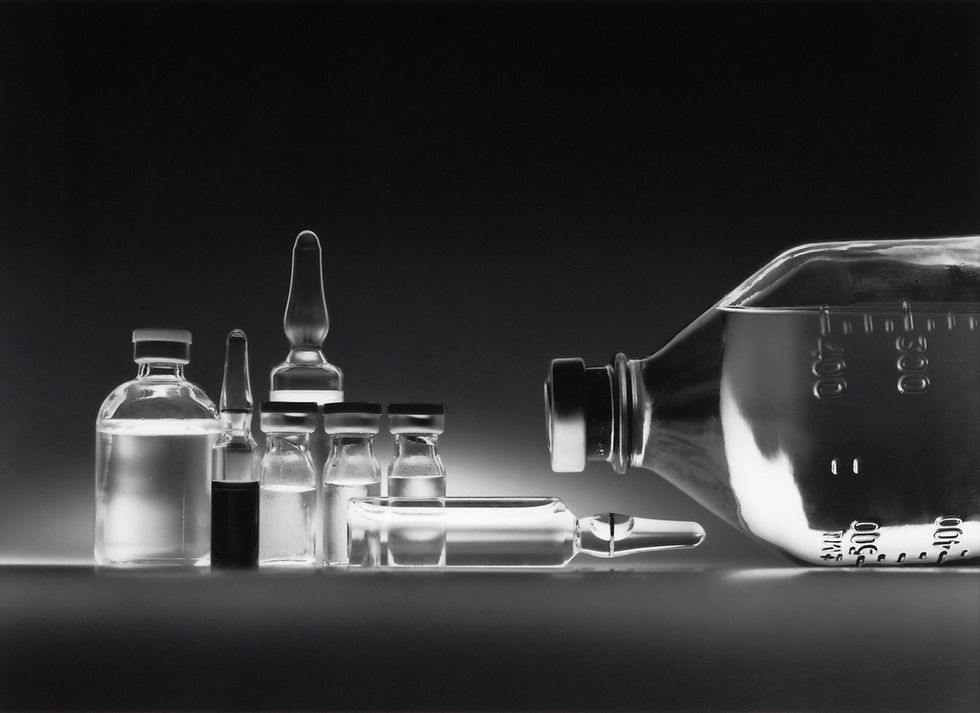BPC-157 vs TB-500: How the Two Peptides Differ - and When Stacking Actually Helps
- Primal Pulse Team
- Oct 13
- 3 min read

Among research peptides associated with tissue repair and recovery, BPC-157 and TB-500 frequently appear side by side.
Both are studied for their potential to promote healing, reduce inflammation, and support recovery, yet they act through entirely different biological pathways.
This guide breaks down how each one works and what evidence supports them, separating facts from speculation.
BPC-157 vs TB-500: What Each Compound Actually Is
BPC-157 (Body Protection Compound-157)
BPC-157 is a synthetic fragment derived from a protein naturally found in gastric juice. It influences several cellular repair processes, including angiogenesis, fibroblast activity, and nitric-oxide signaling.
Animal studies suggest potential effects on tendon, muscle, and intestinal healing, largely through the activation of VEGFR2 and focal-adhesion kinase (FAK) pathways.
TB-500 (Thymosin Beta-4 or Tβ4 fragment)
TB-500 is a synthetic form of a naturally occurring peptide that regulates cell migration and actin polymerization.
It plays a role in wound repair and angiogenesis by influencing the PI3K/Akt/eNOS, TGF-β/Smad, and Notch signaling pathways.
Unlike BPC-157, which seems to act locally at injury sites, TB-500 displays a broader systemic effect on cell migration and vascular remodeling.
How They Work in the Body
Although both are associated with tissue regeneration, their underlying actions are distinct.
BPC-157 primarily triggers growth-related signaling cascades that enhance blood flow, collagen synthesis, and fibroblast proliferation. In animal studies, it also interacts with serotonin and dopamine receptors, potentially explaining its observed protective effects on the nervous system.
TB-500 acts by binding to actin, a protein critical for cellular structure and movement. This interaction helps direct new cell growth to areas of tissue damage and may improve endothelial cell migration—key for wound healing and angiogenesis.
In short, BPC-157 seems to operate through localized tissue repair and angiogenic signaling, while TB-500 exerts more systemic effects by improving cellular transport and regeneration.
What the Research Shows
Preclinical Evidence
Both peptides have shown promising outcomes in animal models:
BPC-157 accelerated healing in tendon and ligament injury models and reduced inflammatory cytokines.
TB-500 demonstrated cardioprotective effects in animal models of myocardial infarction and improved corneal and dermal wound closure rates.
Human Data
Human evidence remains limited.
BPC-157 has been tested in small early-phase clinical studies on gastric ulcers under the code PL-14736, showing safety and some cytoprotective effects.
TB-500 has undergone several Phase I–II studies for cardiac repair and wound healing with acceptable safety profiles but without formal approval.
Together, the findings indicate biologically plausible activity but stop short of clinical confirmation.
Comparing Mechanisms and Applications
Feature | BPC-157 | TB-500 |
Origin | Gastric peptide fragment | Thymosin β4 analog |
Primary action | Local angiogenesis, fibroblast stimulation | Actin binding, systemic cell migration |
Research focus | Tendon, ligament, gut, nerve repair | Wound, cardiac, and corneal healing |
Evidence base | Strong preclinical, minimal human | Multiple Phase I–II human studies |
Typical route in studies | Oral or subcutaneous | Subcutaneous or intramuscular |
The “Stack” Question
Because both peptides are linked to recovery and tissue regeneration, some researchers explore them in combination. However, we currently have little to no published studies evaluating their synergistic use.
Their pathways may complement each other theoretically—local angiogenesis from BPC-157 combined with systemic cell-migration enhancement from TB-500—but this remains anecdotal until confirmed by controlled data.
Why Purity Is Critical
As with all research peptides, purity and verification are essential to ensure reproducibility. Analytical techniques such as high-performance liquid chromatography (HPLC) and mass spectrometry (MS) confirm identity and concentration.
Certificates of Analysis (COAs) from accredited laboratories help researchers validate quality before experimental use. Poor synthesis or improper storage can degrade peptide integrity, emphasizing the need for reliable sourcing and correct handling conditions.
Responsible Use
While the biological potential of BPC-157 and TB-500 is compelling, neither compound is formally approved for human therapeutic use just yet. Key considerations include:
Human studies are limited in size and scope.
Long-term toxicology and pharmacokinetic data are incomplete.
BPC-157 is listed by the U.S. FDA under Category 2 restrictions for compounding as of 2023.
Both peptides are prohibited under the World Anti-Doping Agency’s list (BPC-157 under S0, TB-500 under S2.3).
Only conduct studies using verified research materials under appropriate institutional or regulatory oversight.
BPC-157 and TB-500 both occupy important positions in the field of experimental tissue-repair peptides.
BPC-157’s activity centers on local vascular and growth-factor signaling, while TB-500 influences broader regenerative and anti-inflammatory processes.
The research to date highlights meaningful biological activity with promising preclinical results, even though full clinical validation remains ahead.
Next Steps
Whatever path you follow in the BPC-157 vs TB-500 choice, always ensure you review COAs, lab documentation, and applicable regulations.
For verified, high-purity research compounds, check out the Primal Pulse store.


